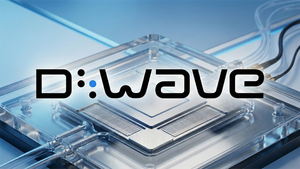Deal represents SatixFy’s first entry into the terrestrial 5G market, following its 5G demonstration with OneWeb and the European Space Agency in June 2022
SatixFy Communications Ltd. (“SatixFy”) (NYSE AMERICAN: SATX), a leader in next-generation satellite communication systems based on in-house developed chipsets, today announced a deal to supply its chips to Indian-based telecommunications solutions provider Astrome, marking SatixFy’s entrance into the terrestrial 5G market and a direct foothold into the Indian market.
Astrome, headquartered in Bengaluru, India and with offices in the U.S. and France, provides gigabit speed wireless solutions to telecom service providers, Private Networks/Enterprises, and Defense organizations. Astrome is focused on delivering GigaMesh, a multi-gigabit wireless X-haul radio to accelerate the deployment of 5G in suburban areas and broadband in rural areas. SatixFy’s PRIME 1 beamformer chip will power Astrome’s Next-Gen GigaMesh product, which is one of the only point-to-multi-point E-band high-speed link for terrestrial 5G in the world. The PRIME 1 beamformer chip, initially developed as a key building block for SatixFy’s satellite antenna systems, supports up to 32 antenna elements and can be digitally connected to other PRIME chips to rapidly build a range of antennas. The PRIME 1 chip was developed with the support of the UK Space Agency via the European Space Agency’s ARTES Core Competitiveness Programme.
Ido Gur, CEO of SatixFy, said, “The 5G backhaul market is rapidly growing, expected to reach $15.5 billion by 20261, and represents a significant growth opportunity for us. To date, SatixFy has focused predominantly on satellite ground and space segment products, and the entry into the terrestrial 5G wireless backhaul market strongly expands our total addressable markets. This new collaboration demonstrates a real appetite for SatixFy’s digital beamforming chips in this new market for us. Furthermore, we are proud that Astrome will be leveraging our competitive edge with our point-to-multi-point capabilities, which will bring them a significant time-to-market advantage over legacy 5G backhaul competitors.”
Neha Satak, CEO, Astrome, said, “We are excited about our partnership with SatixFy. The Prime1 beamformer chip developed by SatixFy will provide a significant time to market advantage to Astrome’s existing GigaMesh product line. Our innovative technology is generations ahead of the existing millimeter wave products available in the market. It deploys our patented multi-beam technology combined with powerful proprietary algorithms to make cost-effective high-speed wireless backhaul solutions a reality.”
Fabrizio Paolis, the European Space Agency’s 5G/6G Implementation Manager, commented, “This technology spin-out from the space industry is an excellent example of how the ESA ARTES program can support industry’s success, not only in the space sector, but also in the highly competitive terrestrial market. We are pleased to see that SatixFy is becoming a respected player also in the large 5G backhaul market.”
Harshbir Sangha, Director of Growth at the UK Space Agency, added, “This opportunity to contribute to a world-first in 5G-connectivity is a major milestone for SatixFy and the UK space sector. The Prime 1 beamformer chip, developed with UK Space Agency support, is central to Astrome’s innovative solution to providing terrestrial 5G connectivity from remote areas.”
About SatixFy
SatixFy develops end-to-end next-generation satellite communications systems, including satellite payloads, user terminals and modems, based on powerful chipsets that it develops in house.
SatixFy’s products include modems that feature Software Defined Radio (SDR) and Fully Electronically Steered Multi Beam Antennas (ESMA) that support the advanced communications standard DVB-S2X. SatixFy’s innovative ASICs and RFICs improve the overall performance of satellite communications systems, reduce the weight and power requirements of terminals and payloads, and save real estate for gateway equipment. SatixFy’s advanced VSATs and multi-beam fully electronically steered antenna arrays are optimized for a variety of mobile applications and services, using LEO, MEO and GEO satellite communications systems, for aero/in-flight connectivity systems, communications-on-the-move applications, satellite-enabled Internet-of-Things, machine-to-machine devices, and consumer user terminals.
Founded in 2012, SatixFy is headquartered in Rehovot, Israel with additional offices in the U.S., U.K. and Bulgaria. For more information, please visit www.SatixFy.com.
Forward-Looking Statements
This press release includes “forward-looking statements” within the meaning of the “safe harbor” provisions of the United States Private Securities Litigation Reform Act of 1995. Forward-looking statements may be identified by the use of words such as “estimate,” “plan,” “project,” “forecast,” “intend,” “will,” “expect,” “anticipate,” “believe,” “seek,” “target” or other similar expressions that predict or indicate future events or trends or that are not statements of historical matters. These statements are based on various assumptions, whether or not identified in this press release, and on the current expectations of SatixFy’s management and are not predictions of actual performance. These forward-looking statements are provided for illustrative purposes only and are not intended to serve as, and must not be relied on by any investor as, a guarantee, an assurance, a prediction or a definitive statement of fact or probability. Actual events and circumstances are difficult or impossible to predict and will differ from assumptions. Many actual events and circumstances are beyond the control of SatixFy.
ABOUT ESA’S ARTES CORE COMPETITIVENESS PROGRAMME
ESA’s ARTES (Advanced Research in Telecommunications Systems) programme is unique in Europe and aims to support the competitiveness of European and Canadian industry on the world market. Core Competitiveness is dedicated to the development, qualification and demonstration of products (“Competitiveness and Growth”), or long-term technology development (“Advanced Technology”). Products in this context can be equipment for the platform or payload of a satellite, a user terminal, or a full telecom system integrating a network with its space segment.
Find out more at: https://artes.esa.int/core-competitiveness
About Astrome
Astrome is a deep tech startup that is accelerating the deployment of 5G infrastructure. The company is backed by marquee investors such as IAN Fund (India), Urania Ventures (France-Germany) and Impact Collective (South Korea). It is pioneering the future of E-band wireless communication. The company is incubated at the Indian Institute of Science(IISc), Bangalore which is India’s premier R&D school. The company has also been accelerated at EvoNexus (San Diego), a 5G accelerator program sponsored by Qualcomm and Verizon. Astrome has carved itself a niche by winning prestigious grants and awards, including the “Most Promising Connectivity Solution” award by International Telecommunication Union (ITU) in the year 2020.
GigaMesh is an E-band radio, with Multiple-Point-to-Point (Multi-P2P) communication, making it the most effective way to share fiber-like capacity wirelessly. In terms of applicability, a single GigaMesh at a Gram Panchayat in Rural India, can connect to multiple surrounding villages, thus, providing a significant cost advantage.
It is deployed as a front-haul, mid-haul, and back-haul in the 5G implementation, aiding Telecom Service Providers (TSPs) and Wireless Internet Service Providers (WISPs).
SAT-COM
1 Research & Markets Report, April 2021
View source version on businesswire.com: https://www.businesswire.com/news/home/20230227005516/en/
Contacts
Helena Itzhak, SatixFy, info@satixfy.com
Sanjana Haralalka, Astrome, visible@astrome.co




